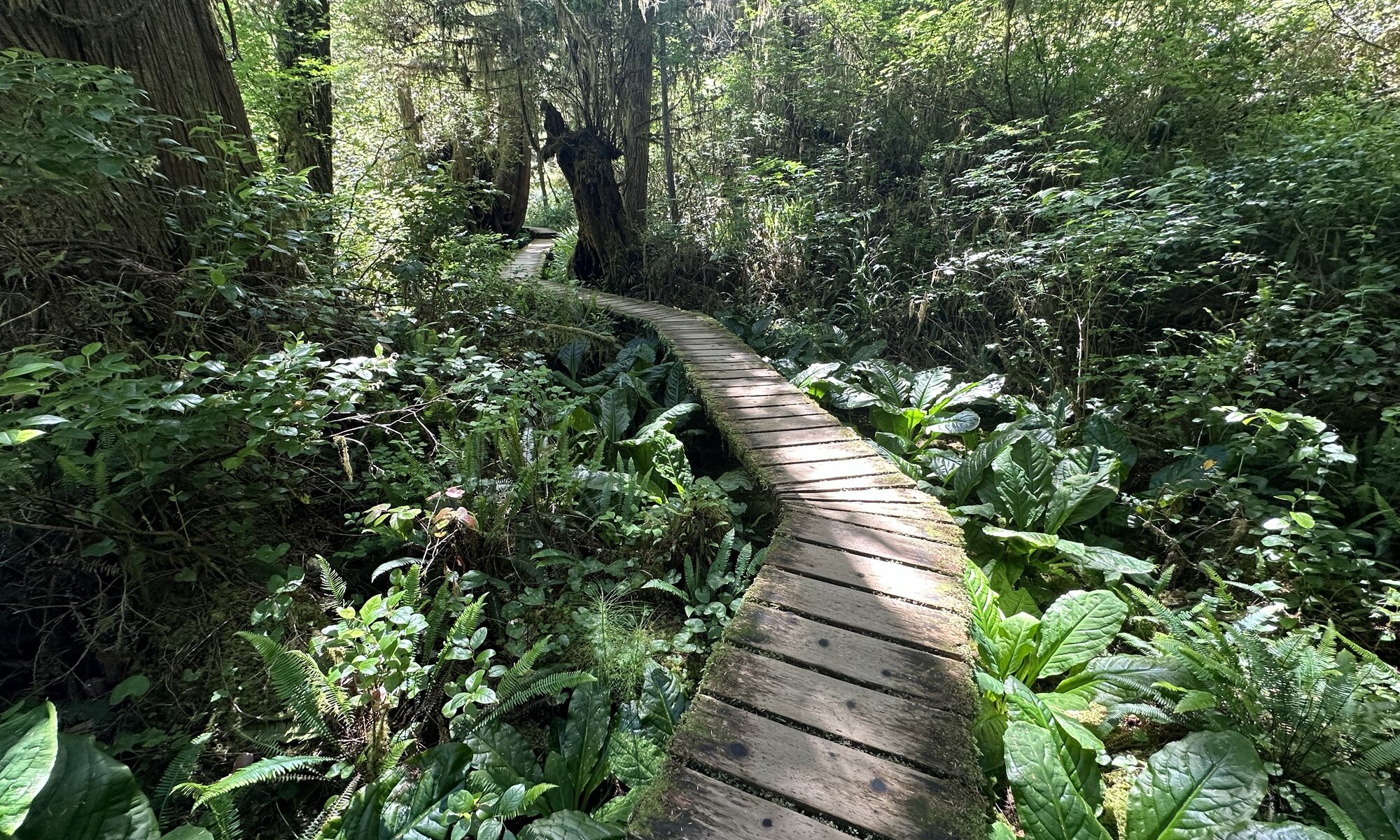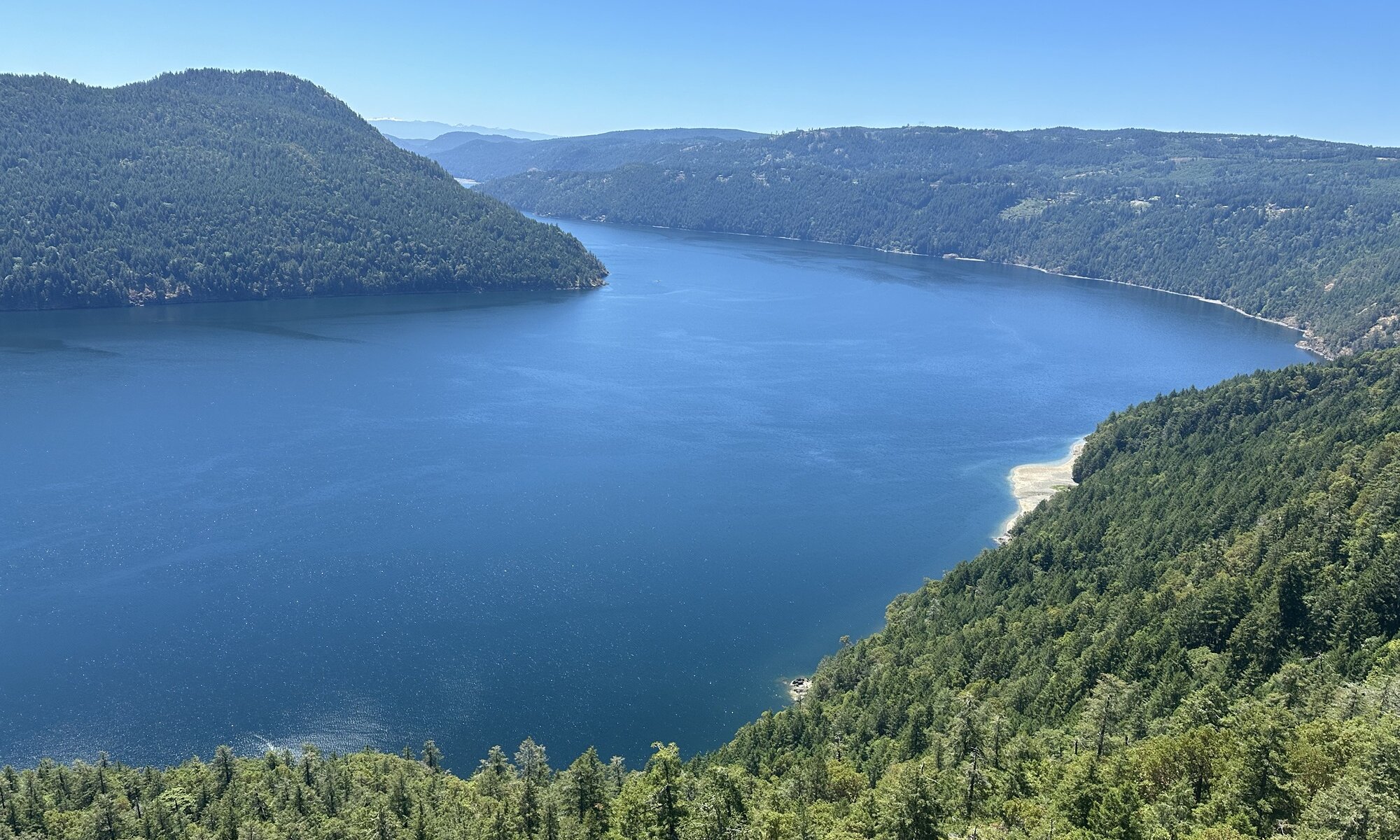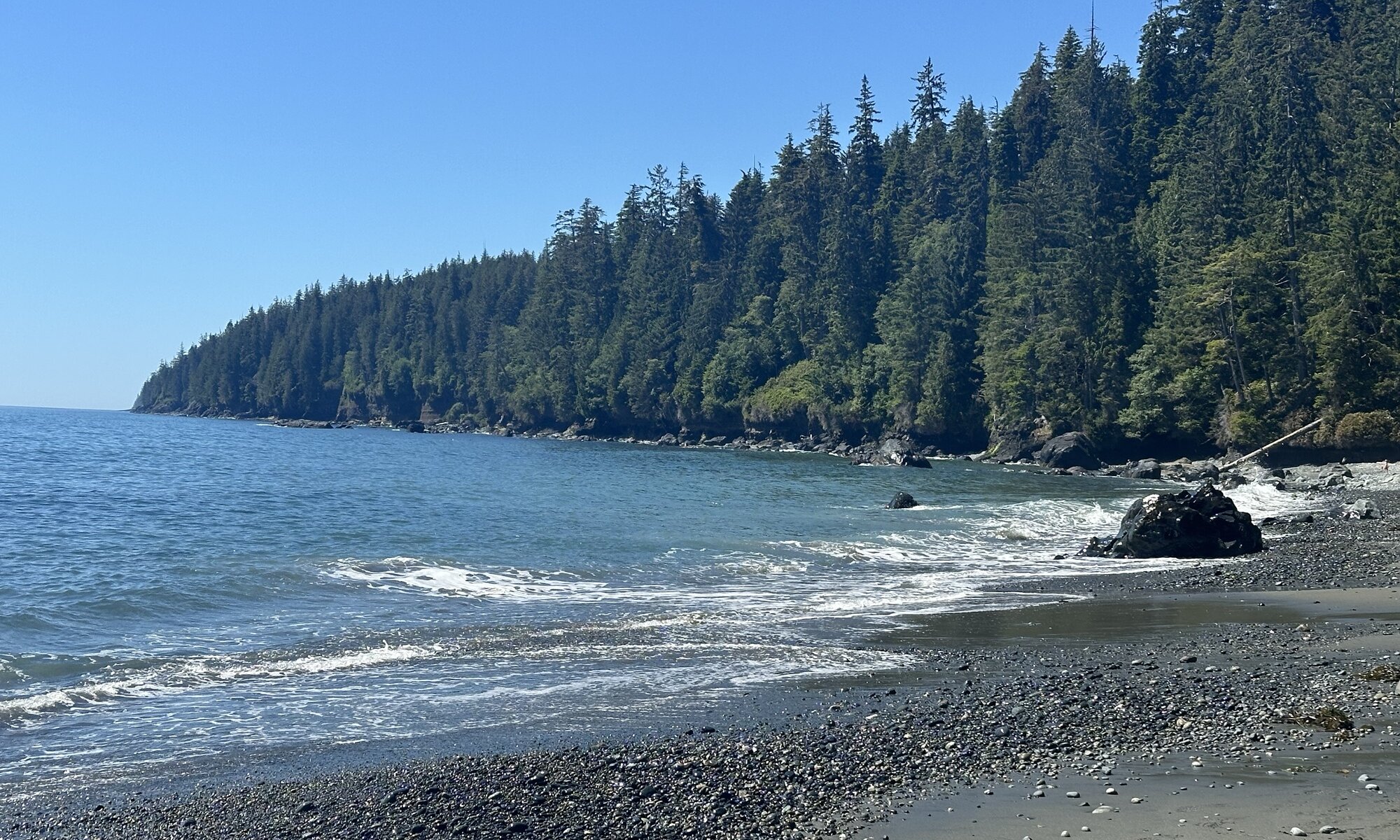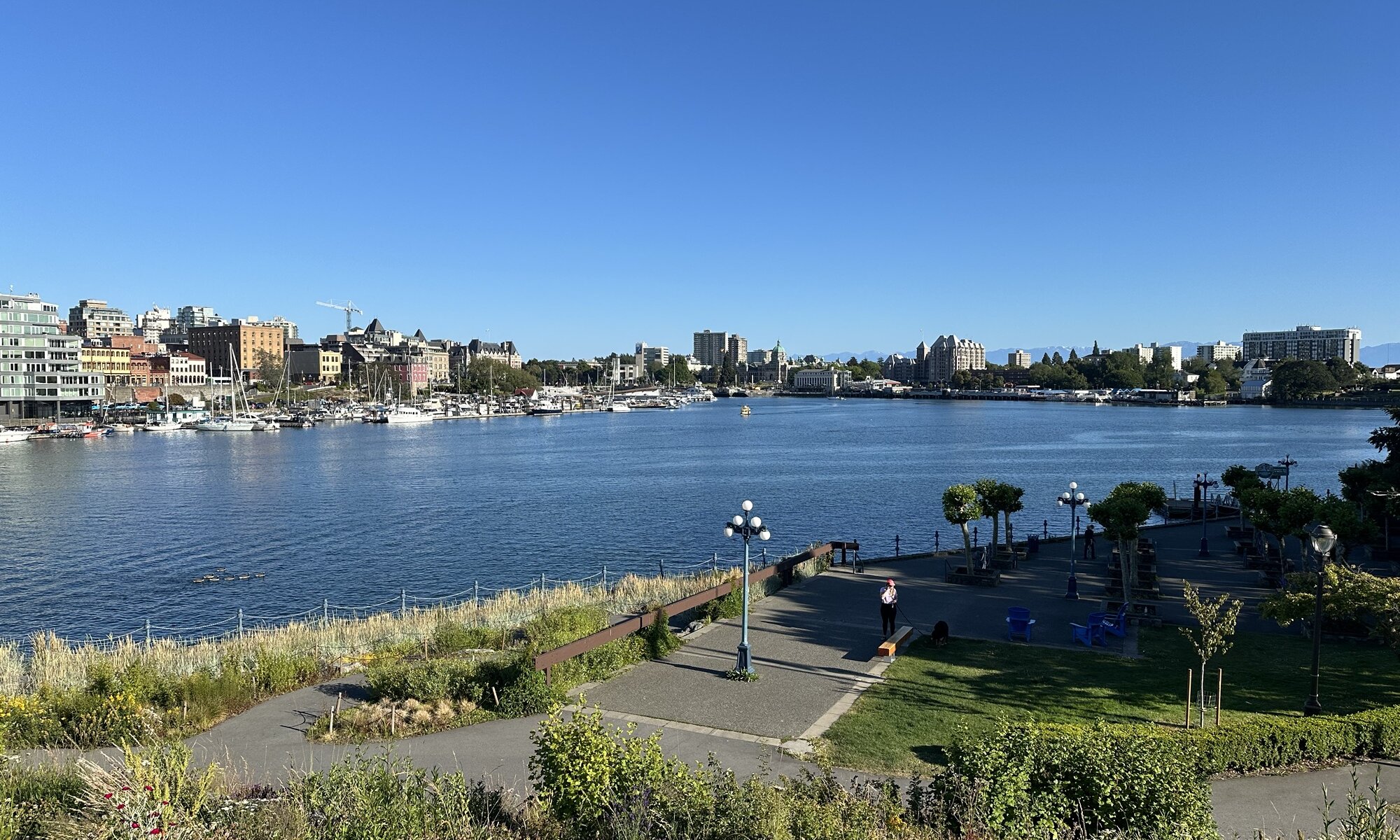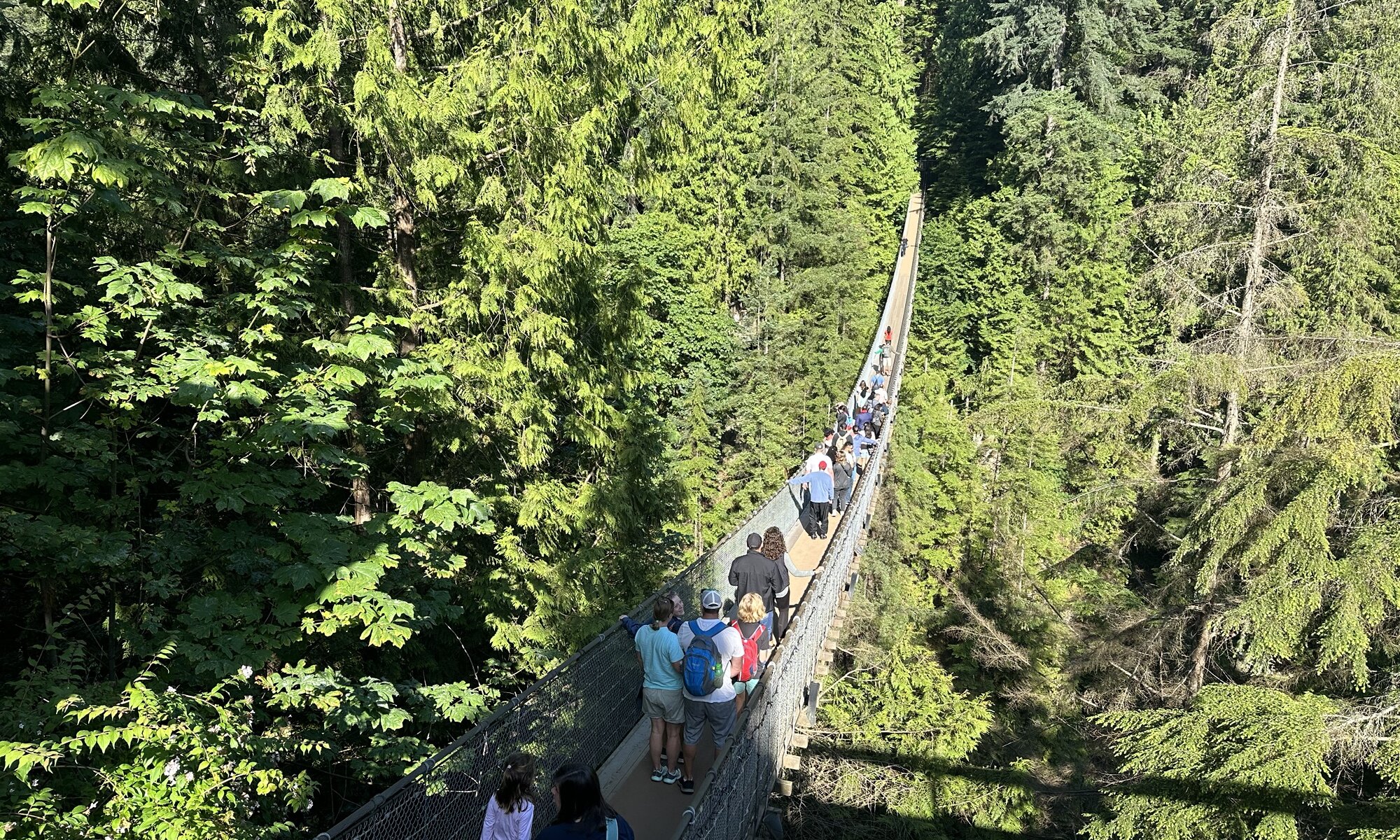When being close to Squamish, British Columbia, you can’t leave out a tour with the Sea to Sky Gondola (named after the road it can be found next to). The gondola offers breathtaking views of the Howe Sound fjord, towering coastal mountains, and lush forests. This scenic gondola ride takes visitors 885 meters above sea level, providing access to a stunning alpine landscape with a variety of outdoor activities.
Continue reading “Sea to sky”Cathedral grove
Cathedral Grove is a nice stop next to the road passing the MacMillan Provincial Park near Nanaimo on Vancouver Island. It is a wonderful old-growth forest that showcases some of the most majestic Douglas fir and red cedar trees in British Columbia. Some of these ancient giants are over 800 years old, reaching heights of 75 meters and diameters of nearly nine meters. The grove features a network of well-maintained (often wooden) walking trails that wind through the towering trees, allowing visitors to experience the serene beauty of the temperate rainforest up close.
Continue reading “Cathedral grove”Pacific rim
On the west coast of Vancouver Island you can discover the Pacific Rim National Park Reserve, a stunning natural destination known for its rugged coastline, lush temperate rainforests, and rich cultural heritage. The park is divided into three main areas: Long Beach, the Broken Group Islands, and the West Coast Trail. Long Beach, the most accessible and popular section, boasts expansive sandy shores, powerful waves ideal for surfing, and scenic trails through old-growth forests.
Continue reading “Pacific rim”Lighthouse
The Lighthouse Loop is a stunning section of the Wild Pacific Trail in Ucluelet, British Columbia, offering breathtaking views of the rugged coastline and the open Pacific Ocean. This 2.6-kilometer loop winds through windswept forests and rocky bluffs, leading to the historic Amphitrite Lighthouse, which has guided mariners since 1915. Doing the full round takes 45 to 60 minutes. The loop is easy to do, sometimes there is some inclination but everywhere you’ll find benches to sit down and relax.
Continue reading “Lighthouse”Rainforest
The Rainforest Trail near Ucluelet offers an immersive experience in the lush, temperate rainforests of Vancouver Island. Located within the Pacific Rim National Park Reserve, this scenic trail consists of two looped boardwalk paths winding through towering old-growth cedars and western hemlocks, draped in moss and surrounded by dense ferns. The trail provides a peaceful and enchanting atmosphere, with interpretive signs along the way that highlight the region’s rich biodiversity and ecological significance.
Continue reading “Rainforest”Malahat Skywalk
On the grounds of the Malahat First Nation near Victoria on Vancouver Island you can discover a large wooden tower, the Malahat Skywalk. It gives you great views on the Saanich Inlet, the surrounding forests and you can even look over into the United States of America – the border is very close and you can’t overlook Mount Baker in the state of Washington. To get on top of the tower you can follow a very long ramp that is winding up inside. If you’re brave you can get down very fast by using a slide.
Continue reading “Malahat Skywalk”Botanic Beach
If you’re interested in flora and fauna of the sea around Vancouver Island, Botanic(al) Beach might be worth a trip. Check the schedule of the tides and arrive at low tide here: the sea creates small pools in which you can observe plants, corals, and shells – it is like a natural exhibition. To reach the beach, follow British Columbia Highway 14 from Victoria along the southwestern coast of Vancouver Island to Port Renfrew and take the Cerantes Road to the southwest.
Continue reading “Botanic Beach”Mystic Beach
A beautiful secluded beach at the end of the world, with a waterfall, caves and a swing – that is Mystic Beach on the southwestern coast of Vancouver Island. Getting there is exhausting and an adventure, as you can reach the beach only on foot passing over wooden walkways, a rope bridge and many stairs, but it is absolutely worth the pain. I was recommended to go there by the employees of my hotel at Vancouver and it was definitely a good choice.
Continue reading “Mystic Beach”Inner harbour
The main attractions of Victoria on Vancouver Island are all grouped around the inner harbour of the city. Once you’ve found your way you can observe aeroplanes and get on water taxis exploring the bay of the capital city of the province British Columbia. Next to the harbor you can find some pretty impressive buildings like the ancient house of the Legislative Assembly of British Columbia or the Hotel Empress. Close-by you can also discover the Royal BC Museum with its historic collection.
Continue reading “Inner harbour”Capilano
I’m just a tiny little bit afraid of heights, but the Capilano suspension bridge is a place to challenge me. It is located in North Vancouver and spans the Capilano river at a height of 70 meters while being 136 meters long. Dependent on who is joining you on the bridge, this can be fun or nightmare. What you might not suspect is that this bridge has a history and was first built in 1888 to access a hut on the other side.
Continue reading “Capilano”




